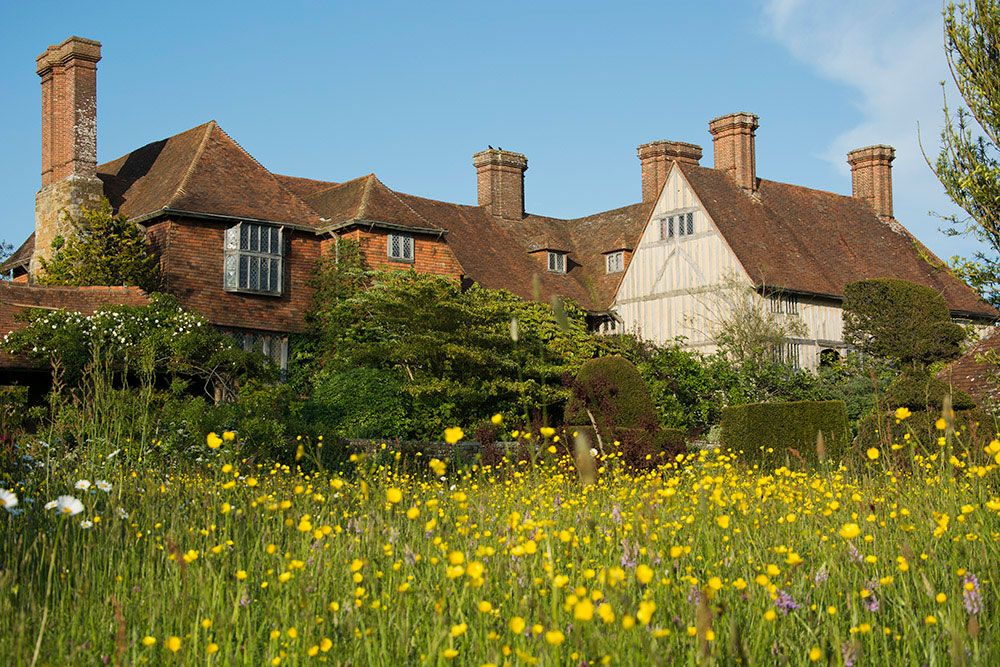Enhance Biodiversity
On this page you can find advice on enhancing biodiversity as part of your organisation's journey towards net zero.
Introduction to biodiversity
Climate change and what we can do to address it cannot be fully understood without considering nature as a whole. Reconnecting with nature will not only positively impact our wellbeing but also make us more likely to protect our natural and rural heritage. Reintegrating biodiversity as part of heritage and at the core of our net zero journey is the only way to ensure long term positive changes.
Biodiversity and native ecosystems play a double role in mitigation and adaptation to climate change: they help our resilience to the threats affecting heritage including overheating, flooding, drought, soil erosion, etc, but also participate in the sequestration of carbon. Protecting and restoring biodiversity, also referred to as nature recovery, is therefore essential and should not be overlooked when making a commitment to become more sustainable.
Sustainable landscapes
Your organisation can maintain and enhance your heritage site’s landscape with native and climate-appropriate plants, suitable to your site. These will reduce the need for irrigation and support local biodiversity. Planting schemes in historic parks and gardens contribute to their historic interest and the enjoyment of these sites by visitors. Carefully considered schemes can enhance biodiversity, support nature recovery, and benefit monument management as part of historic and contemporary planting schemes.
Note that changes to the management and planting of designed landscapes, such as historic parks and gardens, need special consideration. Works to scheduled monuments will require scheduled monument consent and Historic England must be consulted on any proposals.
For sites with public access, you can consider working toward the Green Flag Award Scheme which encourages the provision of good quality public parks and green spaces managed in environmentally sustainable ways. Green Flag Award winners can also apply for Green Heritage Site Accreditation if you meet additional criteria.
You can also visit our Woodland Creation webpage for further information on how to protect the historic environment when creating new woodland and the grants available. Make sure to consult Historic England and discuss your proposals with your local archaeological advisors and Historic Environment Record contact.
Nature conservation
For technical guidance on how to care for and manage historic parks, gardens and landscapes, with specific advice on trees, hedges, wildlife or urban spaces management, please explore our webpage.
You can find guidance on how your organisation can enhance biodiversity on monuments and sites.
Further resources
-
Integrating the Management of the Natural and Historic Environment
Joint Statement between Natural England, Historic England, and the National Lottery Heritage Fund.
-
Protected Rural Landscapes
How we work with National Parks and the National Association of Areas of Outstanding Natural Beauty.
More themes to help your organisation towards Net Zero
-
Understanding Your Carbon Footprint
Find out how to understand your organisation's carbon footprint including how to draft a carbon reduction plan and monitor progress
-
Reduce Your Dependency on Fossil Fuels
Guidance on energy use and purchasing to help you reduce your organisation's carbon footprint to net zero.
-
Sustainable Travel
Guidance on sustainable commuting and business travel as part of achieving net zero for your organisation.
-
Making Your Business Operations More Environmentally Sustainable
Guidance to help you make your organisation more environmentally sustainable on its journey to net zero through its business practices
-
Offsetting
Advice on offsetting carbon as the last step in your organisation's carbon reduction journey towards net zero.





